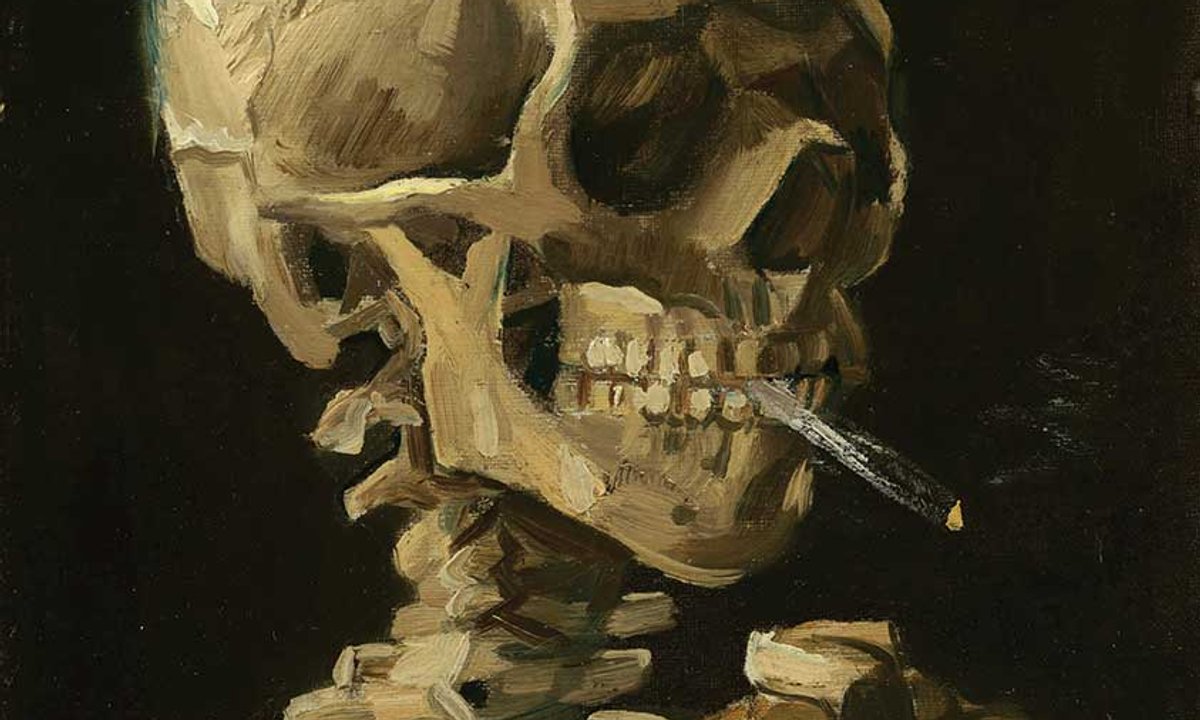The Gothic is always with us. Instead of talking about revivals of this style, we would be better off thinking in terms of the remorseless tread of the undead. Only someone who never sleeps could keep tabs on how regularly brooding Medieval motifs pop up in culture. The most cursory Google search shows that the film director Danny Boyle was recently denied permission to film a zombie movie in a 14th-century church in Northumberland; the star of the new Beetlejuice Beetlejuice film wears a black lace dress and copious kohl to take the air in New York; and a new coffee shop in Glasgow is trading under a blazon even more sobering than their product: Memento Mori.
But now, like a sexton in a cluttered boneyard, an exhibition in Helsinki is hoping to break new Gothic ground. The Ateneum Art Museum, part of the Finnish National Gallery, says it is mounting the first show to highlight how some of the greatest names in art from the late 19th and early 20th centuries were influenced by their Medieval predecessors.
Gothic Modern: From Darkness to Light will find Edvard Munch, Vincent van Gogh and the Finnish artist Helene Schjerfbeck in dialogue with 16th-century masters including Lucas Cranach the Elder, Albrecht Dürer and Hans Holbein the Younger. With the sepulchral and the sensual laid out in this inviting smorgasbord—or rather a voileipapoyta, as a cold spread is called in Finland—the show will appeal to younger visitors, say the co-curators, Anna-Maria von Bonsdorff, the museum’s director, and Juliet Simpson, an art historian from Coventry University.
Generation Z “don’t share the ideas of older generations of a fixed identity, belief in utopias, that the world is going to get better, or there’s such a thing as heaven on earth”, Von Bonsdorff says. “But what comes from a Medieval Gothic worldview, as this exhibition illuminates, is the passion of pain, the passion of yearning for the spiritual, for a greater meaning of the mysteries of a world. We need rituals to guide us, to navigate the dark times, to make sense of living—not with a view that tomorrow will always come, but in the power of the present.”
Visions of sexuality, death and trauma: Marianne Stokes’s Melisande (around 1895)
Courtesy Wallraf-Richartz-Museum & Fondation Corboud, Cologne. Photo: © Rheinisches Bildarchiv/Tobias Kreusler
Dance of death
For the artists of 100 years ago or more, the advent of the machine age brought social upheaval, growing nationalism and the outbreak of world war, and they turned to the Gothic to express their misgivings. This emerged in extraordinary visions of sexuality, death and trauma. The exhibition is organised into themes including erotic devotions, nature and the uncanny, and the dance of death. The more than 200 works will include paintings, drawings and prints as well as sculpture, furniture and other pieces. Key exhibits include Munch’s The Sun (1910-13), Hugo Simberg’s The Garden of Death (1896) and Dance on the Quay (1899), and Arnold Böcklin’s Self-Portrait with Death Playing the Fiddle (1872).
What comes from a Medieval Gothic worldview is the passion of pain
Anna-Maria von Bonsdorff, curator
The curators say that the exhibition will provide a new context for understanding the featured artists. For example, Munch is often seen as a solitary genius but in fact his work was influenced by German Medieval art. Similarly, Marianne Stokes, usually considered a late Pre-Raphaelite, included Medieval Gothic themes in her work.
One of the most celebrated paintings in the exhibition is Van Gogh’s Head of a Skeleton with Burning Cigarette (1886), on loan from the Van Gogh Museum in Amsterdam. It was painted during the artist’s student days in Antwerp. It has tended to be seen as a juvenile joke, Von Bonsdorff says. “It seems that Van Gogh finished it in a single session, with the smoke from the cigarette being one of the last additions. However, this intriguing piece now has a new interpretation when placed within the Gothic Modern context.”
According to Von Bonsdorff, Head of a Skeleton illuminates a central fascination among artists of Van Gogh’s time with the Danse Macabre, a literary and artistic convention explored by masters including Holbein and Dürer. She adds: “These types of images in Western art since the Medieval period have served to remind the viewer of life’s brevity and of a painter’s skill in rendering that mournful dilemma.”
• Gothic Modern: From Darkness to Light, Ateneum Art Museum, Helsinki, 4 October-26 January 2025; Nasjonalmuseet, Oslo, 28 February-15 June 2025; Albertina, Vienna, 19 September 2025-11 January 2026

